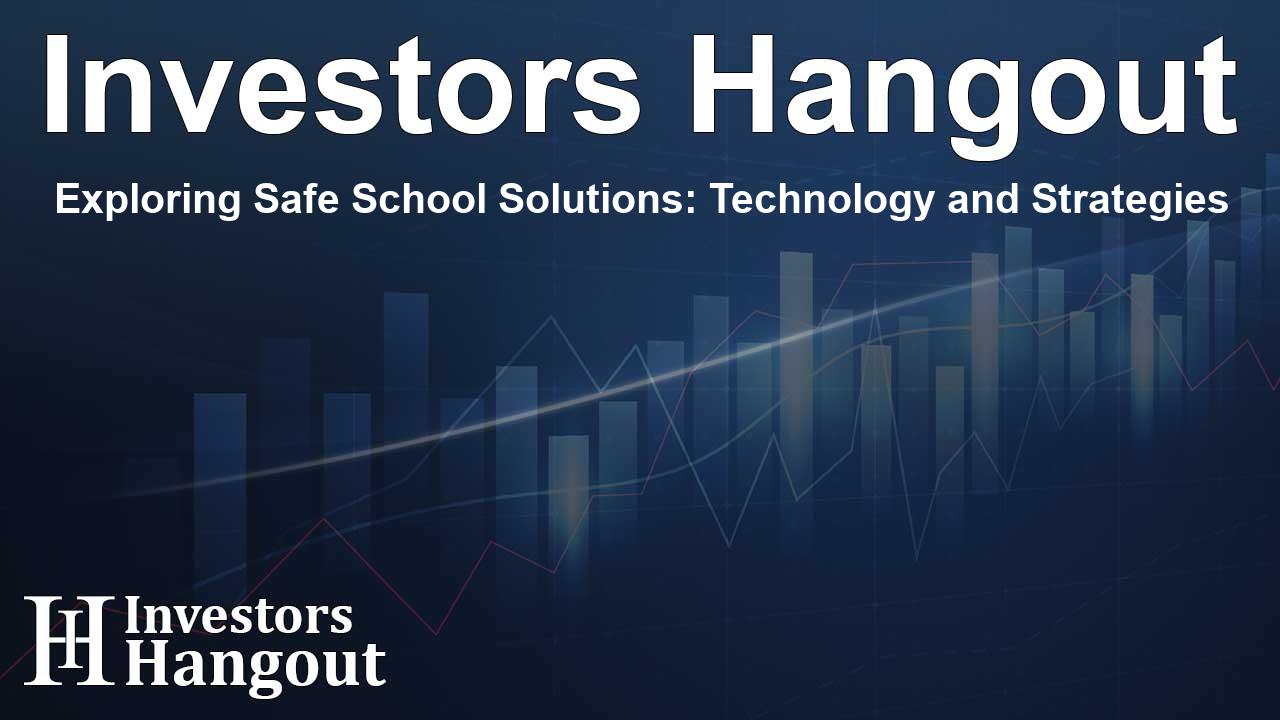Exploring Safe School Solutions: Technology and Strategies

Understanding the Latest Trends in K-12 School Safety
CENTEGIX has unveiled its insightful 2025 School Safety Trends Report, shedding light on the significant advancements in safety technologies and strategies that are making schools across the nation safer. Based on data from over 265,000 crisis incidents, this report emphasizes the growing importance of integrating technology and comprehensive training to prevent and manage emergencies effectively.
Key Technological Advances in School Safety
The report highlights the increased adoption of wearable panic buttons and multi-sensory emergency notifications. These advancements are not merely trends but essential innovations that equip schools to respond to incidents more effectively. By integrating these technologies, educational institutions are prioritizing the safety of their staff and students, ensuring that help is always just a button away.
The Role of Wearable Panic Buttons
Wearable panic buttons like CrisisAlert provide school officials with rapid communication capabilities, allowing them to summon help immediately. Equipped with dynamic incident mapping, these devices enable a faster response in emergencies where time is of the essence. Schools leveraging such technology are demonstrating improved safety management and a greater capacity to handle various crisis situations.
Importance of Multi-Sensory Notifications
Multi-sensory emergency notifications play a crucial role in ensuring that every member of the school community is informed and can react quickly during an emergency. By utilizing different senses to convey urgent messages, these systems maximize awareness and adherence to safety protocols, significantly enhancing overall campus safety.
Data-Driven Safety Decisions Leading to Change
One of the most striking findings from the report is the impact of data-informed decision making in school safety contexts. Administrators are now utilizing collected data to address behavioral issues, optimize resource allocation, and build stronger community trust. For instance, in certain school districts, a notable 81% reduction in suspensions has been recorded, attributed to proactive strategies and data-supported insights.
Legislation Supporting Digital Mapping
The report also notes a growing trend in legislative support for digital campus mapping. With 23 states adopting laws mandating these technologies, school leaders and policymakers increasingly recognize their value in improving emergency response times and situational awareness for first responders. Such measures are essential in ensuring that first responders have immediate access to critical information in crisis scenarios.
Integration of Safety Systems
The report emphasizes the expectation for integrated safety systems within school districts. Policymakers are actively seeking interoperable solutions that connect various safety functions, including visitor management, access control, surveillance, and communication systems. This holistic approach streamlines safety responses and enhances efficiency across educational facilities.
Empowering Educators and Staff Through Technology
As CENTEGIX continues its mission to enhance school safety, the company is strategically collaborating with numerous K-12 districts nationwide. The leadership acknowledges that prioritizing safety is paramount, providing a secure environment conducive to learning. The CENTEGIX Safety Platform empowers teachers and administrators to manage safety incidents confidently, enabling them to focus more on education.
Conclusion: School Safety as a Shared Responsibility
In conclusion, the future of K-12 school safety lies in the combination of innovative safety technologies and strategic training initiatives. By embracing these advancements, educational institutions can foster an environment where safety is a shared responsibility among all stakeholders, enhancing the well-being of students and staff alike.
Frequently Asked Questions
What is the CENTEGIX Safety Trends Report about?
The CENTEGIX Safety Trends Report provides a comprehensive analysis of over 265,000 incidents, focusing on how wearable technologies and training are enhancing school safety.
How do wearable panic buttons improve safety in schools?
Wearable panic buttons offer immediate communication for emergencies, enabling faster responses and helping to ensure the safety of students and staff during critical incidents.
What role does data play in school safety decisions?
Data helps schools identify trends in behaviors, optimize resources, and inform strategies to enhance campus safety, resulting in significant positive changes over time.
Why is digital mapping important for school safety?
Digital mapping provides precise location information during emergencies, ensuring that first responders can navigate effectively and reach those in need as quickly as possible.
How are safety systems becoming more integrated in schools?
Schools are increasingly seeking integrated systems that connect different safety technologies, enhancing their overall emergency response capabilities and operational efficiency.
About The Author
Contact Riley Hayes privately here. Or send an email with ATTN: Riley Hayes as the subject to contact@investorshangout.com.
About Investors Hangout
Investors Hangout is a leading online stock forum for financial discussion and learning, offering a wide range of free tools and resources. It draws in traders of all levels, who exchange market knowledge, investigate trading tactics, and keep an eye on industry developments in real time. Featuring financial articles, stock message boards, quotes, charts, company profiles, and live news updates. Through cooperative learning and a wealth of informational resources, it helps users from novices creating their first portfolios to experts honing their techniques. Join Investors Hangout today: https://investorshangout.com/
The content of this article is based on factual, publicly available information and does not represent legal, financial, or investment advice. Investors Hangout does not offer financial advice, and the author is not a licensed financial advisor. Consult a qualified advisor before making any financial or investment decisions based on this article. This article should not be considered advice to purchase, sell, or hold any securities or other investments. If any of the material provided here is inaccurate, please contact us for corrections.
